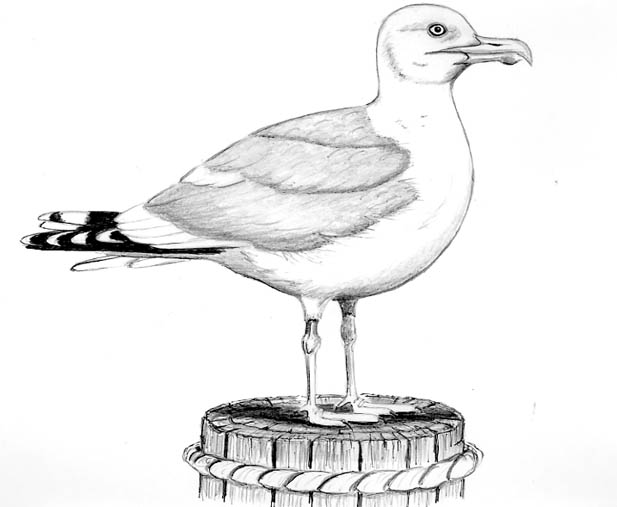
Dear Bird Folks,
I’d like to know where all the gulls have gone. This past January we took a mini vacation to Provincetown. In the course of our trip I noticed that the beaches and parking lots were filled with gulls. Yet on our recent Fourth of July visit, we saw very few gulls. Someone told me that the Herring Gull population is dropping due to the closing of the landfills (aka dumps). That may be true, but could the population have plummeted so much in six months?
– David, Vestal, NY
It’s okay, Dave,
You can say “dump” to me. Everyone here on Cape Cod, except for perhaps a few people in Chatham, know what a dump is. Heck, one of our towns, Truro, even has an annual Dump Dance. It’s quite the happening. People who haven’t seen each other in years often hook up at this event. The Truro Dump Dance is lots of fun and provides a good opportunity to do some social recycling, if you know what I mean.
January is a great time to visit Provincetown. You’ll have no trouble finding a place to park and you won’t have to wait in line to get into your favorite restaurant…because it won’t be open. January is also a good time of the year to study gulls. As you said, David, the parking lots and beaches are often filled with large flocks of them and they are in no hurry to get out of your way. Of course, the reason you don’t see the same flocks hanging out in the summer is because the parking lots and beaches are now filled with cars, people, and an endless stream of colorful characters. The other reason for the lack of gulls is that many of them have gone off to nest. While the rest of us are eating saltwater taffy and fried dough and waiting in line at our favorite restaurant, the adult gulls have headed to Monomoy National Wildlife Refuge to lay eggs, raise chicks and to get away from the crowds in Provincetown.
It’s probably safe to say that the Herring Gull isn’t high on many people’s favorite bird list. Yet, the Herring Gull has a few of the same traits that many of us find endearing in other birds. For example, we get all warm and fuzzy at the thought of bluebirds or swans mating for life, but the fact that Herring Gulls mate for life doesn’t seem to improve their status very much. Other folks get all emotional when they see a male cardinal feed a sunflower seed to its mate. Well, gulls bring food to their mates, too, but nobody seems to care about that and I’m not sure why. Although it could be because instead of passing sunflower seeds, gulls regurgitate rotting fish guts to their mates. Yeah, I guess I can see where that might be a turnoff for some people.
Along the coast Herring Gulls typically nest in large colonies on isolated islands and barrier beaches. The older birds build their nests in the center of the colony, forcing the younger birds to lay their eggs on the edges and exposing them to any hungry predators that may be around. Ironically, some of the most problematic predators in a gull colony are other gulls. Herring Gulls are good parents but they make rotten neighbors. They have the unfriendly habit of busting open any unguarded eggs they can find. It gets even worse. After only a day or so after hatching, the young gulls are quite mobile. Any chicks with a sense of adventure may wander away from its parents and that’s not good. Sometimes lost baby gulls are adopted by the family living next door, but more often the little bird is attacked and may even be served for lunch. Whoa! And I thought the lady across the street, who always took my kickball, was bad.
For the first few weeks, the chicks are fed a daily batch of whatever the parents can dig up. By the end of the fifth or sixth week, the babies are as large as their parents and the adults are starting to think enough is enough. Gradually, they stop providing the kids with easy meals. This action forces the youngsters to find their own food and that’s when things get tough for the new birds. The young gulls that were lucky enough to avoid hungry predators and the deadly beaks of their nasty neighbors, now face their biggest challenge, finding their own food. You would think birds that are capable of eating just about anything would have no trouble coming up with a meal, but that’s not always the case. Only a month after setting out on their own, nearly a third of the young gulls have taken a one-way trip to the big bird nest in the sky.
In your question, David, you mentioned something about the dump closings causing a decline the Herring Gull population. The dump/gull relationship is complicated, and I’m not really good with complicated things. I’m going to need more time to sort this out. I’ll finish answering your question next week. In the meantime, you should polish up your dancing shoes. I hear the Compost Quartet is playing the Truro Dump Dance this fall. They are very good.